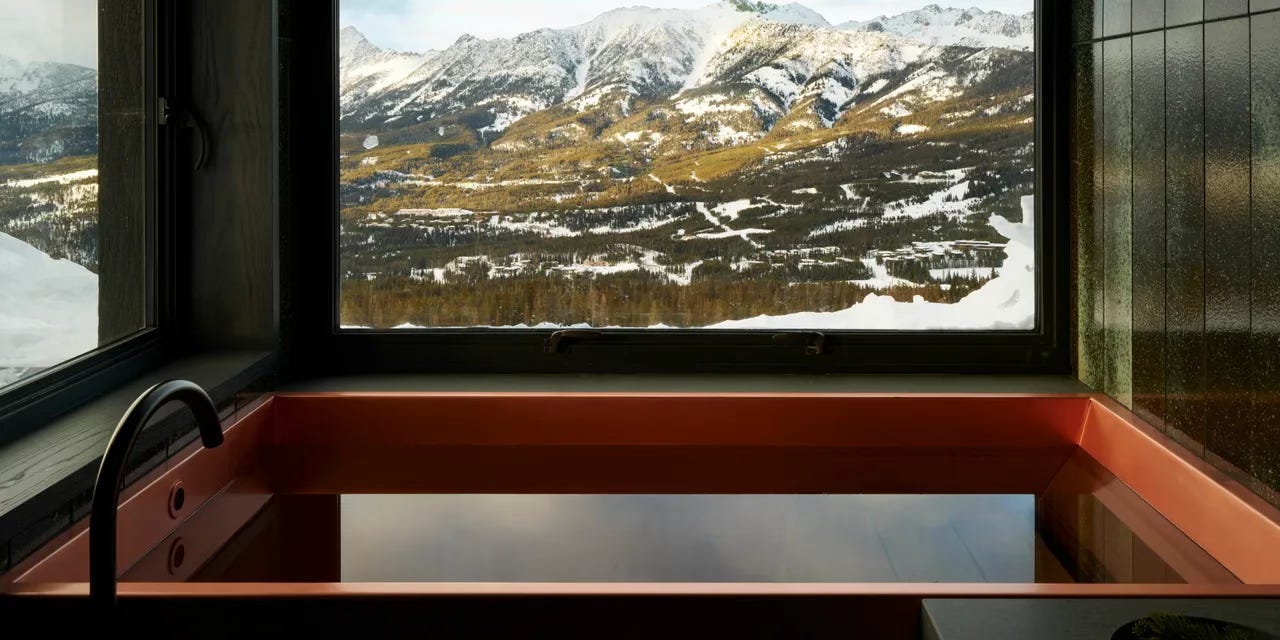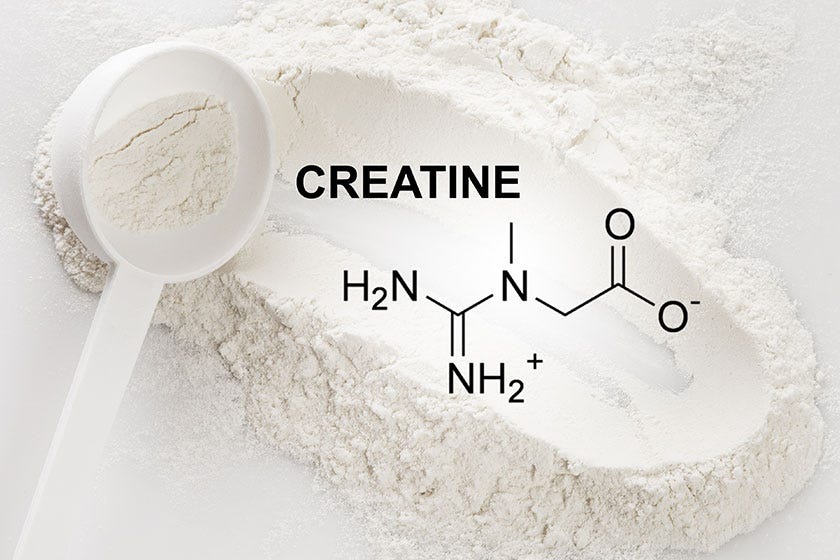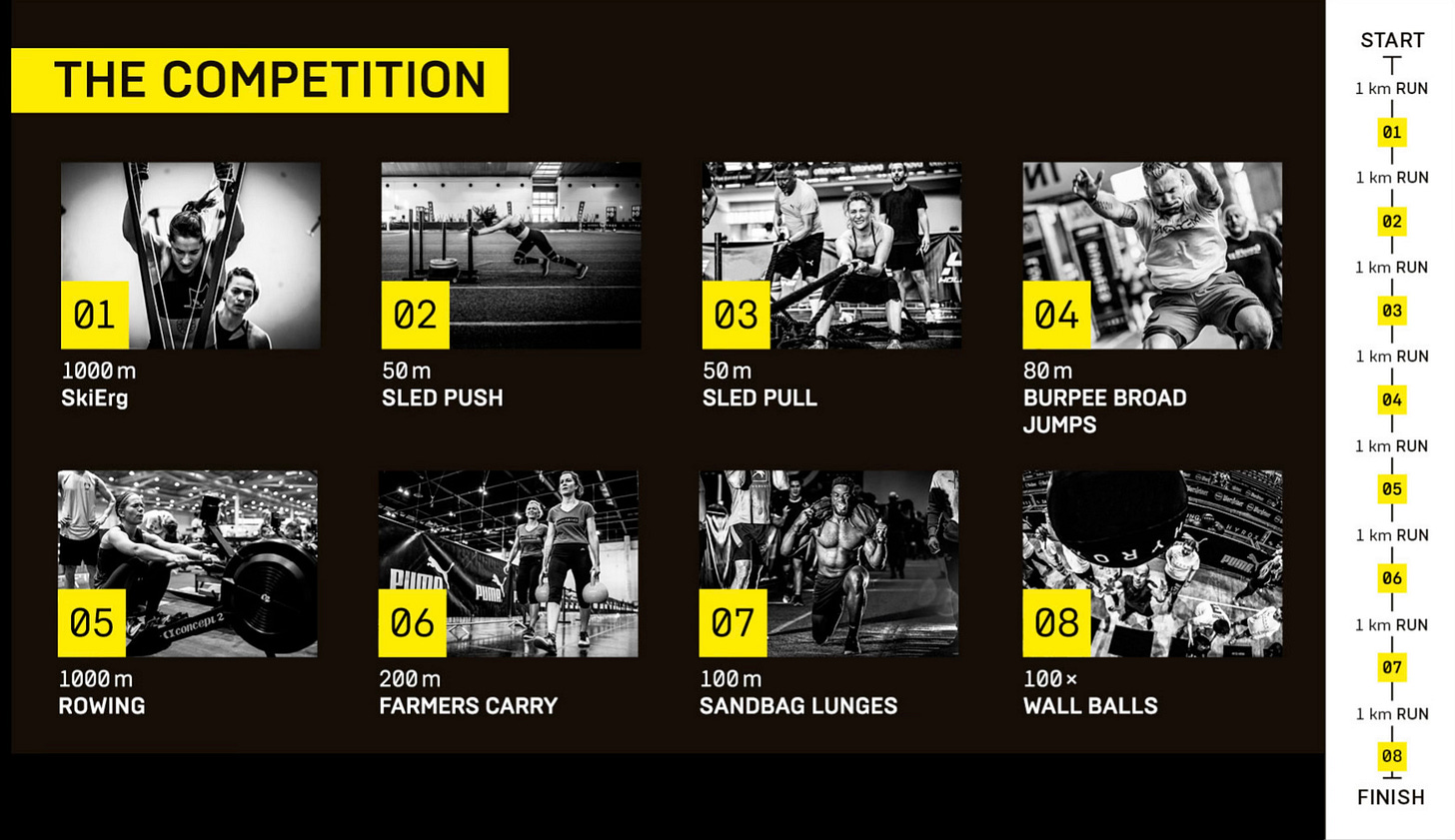Longevity, Social Wellness Clubs, and the Rise of the Hyrox Athlete: Shaping the Trends of 2025
005: Trend Predictions: Biggest Winners (Part 1)
Welcome back!
First, my heart goes out to the people of Los Angeles and surrounding areas affected by the devastating wildfires in California. It’s a sobering reminder that life is precious. Take care of yourself and your loved ones–because at the end of the day, material things can be replaced. Health and safety are what truly matter.
In moments like these, the strength of a community shines. It’s on all of us to lend a hand to those in need. One day, the roles might be reversed, and you may find yourself relying on the kindness of others. If you’re able to help, click here to see how you can lend your support.
This week, I’m kicking off a two-part series on the trends that will define 2025. Part One highlights the biggest winners, while Part Two will explore the biggest losers and what to watch for in the year ahead.
Now, let’s dig in.
The Biggest Winners of 2025:

Playing the Long Game: Healthspan > Lifespan
Longevity is all about optimizing health and extending the years we live in good health (healthspan), rather than just focusing on how long we live (lifespan). It’s about strengthening your body’s defense systems, lowering long-term health risks, and enhancing daily performance.
Longevity Clinics Go Mainstream
Until recently, longevity treatments were expensive and out of reach for most people. That’s changing. Services like red light therapy, NAD+ infusions, detailed biomarker assessments, and contrast therapy (cold plunge + sauna) have been largely limited to high-end wellness spaces and expensive concierge doctors. But with growing demand, 2025 could be the year longevity clinics go mainstream.
Affordable, accessible options are already emerging. Restore Hyper Wellness, with 225+ studios nationwide, is leading the charge. Their mission? Make wellness affordable and accessible to everyone. Their offerings include Cryotherapy, Red Light Therapy, Infrared Sauna, Compression, IV Drip Therapy, Intramuscular (IM) Shots, Hyperbaric Oxygen Therapy, Skin Treatments, Biomarker Assessments, and more—all under one roof.
We’re living longer, no doubt. But the focus is shifting from just adding years to maximizing the quality of those years. As more people adopt longevity-focused practices, this trend is poised to reshape healthcare, corporate wellness programs, and even local gyms.
The Sauna Revolution
I’m very bullish on saunas. They’ve been used for centuries worldwide, but they’re still considered a luxury for many. That’s changing, too. In 2025, I predict saunas will become a mainstream health practice, much like exercise.
Here’s why: the data speaks for itself. Saunas mimic many physiological responses induced by exercise and offer incredible benefits:
• Preserving muscle mass and countering sarcopenia (age-related muscle loss)
• Improved blood circulation
• Reduced stress and inflammation
• Better sleep
• Detoxification
Studies show that people who use saunas more than four times a week experience:
• 40% reduced risk of all-cause mortality
• 46% lower risk of hypertension
• 63% reduced risk of heart disease mortality
• 65% lower risk of Alzheimer’s disease
Even using a sauna two to three times a week reduces cardiovascular disease risk by 27% compared to once-a-week users.
Sauna use also boosts endurance. A small intervention study on six male distance runners found that one 30-minute sauna session, twice a week for three weeks post-workout, increased their time to exhaustion by 32%. This highlights the potential of saunas to enhance athletic performance and recovery.
Experts like Dr. Peter Attia and Dr. Rhonda Patrick are huge advocates, and their research makes it clear: sauna use is a simple, accessible way to boost long-term health.
If you’re new to saunas, start small and work your way up to the recommended protocol: 20 minutes per session, four times a week, at ~180°F/80°C. As with any routine, the best protocol is the one you stick to.
The Creatine Comeback
Creatine isn’t just for bodybuilders anymore. This supplement, widely researched since the 1990s, is best known for its role in improving athletic performance. But new studies are uncovering its broader benefits for cognitive function, cardiovascular health, and more:
• Cognitive Boost: A single dose (0.35g/kg) improves memory, enhances processing speed, and stabilizes brain pH during sleep deprivation. Effects peak at 4 hours and last up to 9 hours, even improving cognitive performance beyond non-sleep-deprived conditions.
• Cardiovascular Health: Just four weeks of creatine supplementation improved blood flow, reduced blood glucose, and lowered triglycerides in older adults.
Despite its benefits, creatine has long been misunderstood. I’m here to set the record straight:
• Myth: Creatine causes kidney damage.
• Truth: Decades of research have shown that creatine is safe for healthy individuals, even at higher doses. Concerns about kidney health stem from outdated studies that misinterpreted creatinine levels (a natural byproduct of creatine metabolism) as kidney damage.
• Myth: Creatine causes weight gain.
• Truth: Creatine can increase water retention in muscles, but this is not the same as fat gain. This water retention is a sign of improved hydration and performance.
• Myth: Creatine is only for men.
• Truth: Creatine benefits everyone, regardless of gender. Studies have shown that women experience the same improvements in strength, endurance, and cognitive function as men. In fact, creatine can be particularly beneficial for women during aging, as it helps preserve muscle mass and supports bone health.
The recommended daily dosage is 5g of creatine monohydrate to optimize both athletic and cognitive performance. No need to “load” or cycle on/off. With its extensive research backing and growing evidence of benefits beyond the gym, I predict we’ll see creatine rebranded as a must-have cognitive and cardiovascular super supplement, appealing to everyone from athletes to older adults, and anyone seeking improved brain and heart health.
Billionaires Can’t Afford Teams Anymore
The Institutionalization of Sports Investments
Sports franchise values are soaring, with the average NFL team now worth $6.5 billion. Billionaires can’t keep up, and controlling stakes are out of reach for most. Enter private equity. All major U.S. men’s leagues and the NWSL now allow institutional investors to own minority stakes, and the NFL recently approved select private equity firms to purchase up to 10% of a team.
So why are private equity firms so bullish on sports?
• Media Rights: Live sports continue to dominate as must-see entertainment, and broadcasters are paying a premium for the rights.
• Revenue Innovation: Teams are thinking beyond game day, tapping into real estate development, athlete brands, and sports betting to diversify income.
• Outperformance: Between 2000 and 2023, NBA franchise values rose 2,004% and NFL values grew 1,108%, crushing the S&P 500’s growth of 307%.
One of the biggest drivers of value? Real estate
Sports ownership is no longer just about ticket sales or media rights—it’s about transforming stadiums and their surrounding areas into thriving entertainment ecosystems. Owners are increasingly creating multi-use developments that include retail stores, restaurants, office spaces, residential units, and event venues. These mixed-use spaces attract visitors year-round, generating consistent revenue far beyond the game.
The Buffalo Bills’ $2.1 billion stadium, set to open in 2026, perfectly illustrates this approach. The open-air stadium features a snow-melting canopy, a first-of-its-kind design that protects 60% of fans from snow and rain while simultaneously reflecting crowd noise back to the field for an enhanced game-day atmosphere. This innovative canopy, combined with a heated natural grass field, gives fans (and athletes) many of the comforts of a domed stadium while preserving the outdoor football tradition. The world-class snow-melt system can handle up to 7 feet of snow, ensuring the stadium remains fully functional during Buffalo’s harsh winters.
And the plans don’t stop there. Reports suggest preliminary talks are underway to create an entertainment zone on the site of the old stadium once it’s torn down. The vision includes restaurants, bars, and shops, turning the area into a year-round destination for fans and visitors alike.
By welcoming institutional investors, leagues are unlocking new opportunities for growth while improving liquidity and accessibility for these high-value assets. Additionally, the real estate strategies tied to stadiums are creating lasting value, not just for team owners but for local economies and communities. Click here to see Why Buffalo is 2025’s Hottest Market (Again).
While sports teams have traditionally been viewed as trophy assets, private equity sees them as platforms for innovation and growth, with real estate playing a pivotal role. However, not everyone is sold on the sustainability of this model. Some critics liken the current enthusiasm to the dot-com bubble, where valuations far exceeded fundamentals. There may be some truth to this concern; but with most major sports media rights deals secured for the near term, sports investments are poised for a strong run—at least until the next cycle of media negotiations.
The Fastest Growing Sport in The World
The Year of the Hyrox Athlete
Not to be confused with the hybrid athlete, Hyrox is set up to dominate 2025. With over 5,000 training clubs worldwide and a 260% annual growth rate in global affiliations, the sport is scaling rapidly. HYROX 365, its training and education ecosystem, has made performance fitness accessible to everyone—regardless of skill level.
What Is Hyrox?
Hyrox combines an 8-kilometer run with functional fitness stations like sled pushes, burpees, and wall balls. Open to all fitness levels, from beginners to elite athletes, it offers a competitive yet inclusive atmosphere. The sport’s explosive growth—attracting 20,000 participants at its most recent event in London—reflects its mass appeal. By the end of 2025, global participation is projected to exceed 500,000, with a target of 1 million by 2027.
Revenue Powerhouse
Hyrox is more than just a race; it’s a lucrative business model:
• Entry Fees: With an average ticket price of $100–$160, ticket sales alone could generate $50–$80 million annually.
• Photo Packages: At $40 each, purchased by 30% of participants, this adds another $6 million.
• Gym Affiliations: Over 5,000 partner gyms contribute $5 million in annual fees.
• Destination Events: The 2024–25 World Championships in Chicago will draw over 10,000 athletes and fans, generating an estimated $2–$5 million in short-term accommodation revenue alone.
• Economic Impact: Combining visitor spending, job creation, and tax revenues, Hyrox could bring an estimated $15–20 million in economic benefits to Chicago.
The Olympic Dream
Hyrox’s structured format and inclusivity make it a prime contender for Olympic recognition, further solidifying its status as a global fitness movement.
Building the Next Generation of Athletes
The Hyrox Youngstars initiative brings fitness racing to children aged 8–15, offering scalable, low-barrier access to exercise. At a time of rising childhood obesity, this is a welcome step toward fostering healthy habits in younger generations.
Cultural Influence
From sold-out races in major cities like NYC to partnerships with Puma, Centr, and F45, Hyrox has captured global attention. The recently launched PUMA x HYROX SS25 collection, featuring co-branded footwear, highlights the sport’s growing cultural relevance. TIME even named it one of the world’s most influential companies for 2024.
The Hype is Real
I tried to register for the upcoming Hyrox race in NYC, but the event sold out almost immediately. Maybe I’ll have better luck next year. Word on the street is that once you join the Hyrox community, you’re hooked for life–training harder, getting faster, and always chasing your personal best. 2025 may be the Year of the Hyrox Athlete, but it’s clear that this sport is only just getting started.
Wellness Real Estate Continues to Thrive
Acquisitions, Developments, and Collaborations

Wellness Real Estate is gaining momentum, with developments that highlight the industry’s rapid evolution. Projects like THE WELL’s Coconut Grove, The Glass House Boca Raton’s partnership with Sollis Health, and Therme Group’s acquisition of Therme Erding are paving the way for the future. These milestones reflect the growing demand for spaces that prioritize health, community, and transformative experiences.
THE WELL is Expanding in Miami
With locations in New York City, Costa Rica, Connecticut, and Mexico, THE WELL is making waves in the wellness space. In collaboration with Terra, South Florida’s leading developer, THE WELL is working on its second residential project in Miami. Designed by Arquitectonica with interiors by Meyer Davis, THE WELL Coconut Grove blends cutting-edge design with holistic wellness principles.
The centerpiece is a 13,000-square-foot Wellness Club, a sanctuary for health and wellness enthusiasts. Complemented by a 40,000-square-foot rooftop oasis, the club features every amenity imaginable—including a pickleball court and rooftop fitness forest.
The $650M project is set to break ground in late 2025, with an opening expected in early 2028. One-bedroom units will start at $1.5M. For those eager to get a taste of THE WELL lifestyle sooner, its first residential project in Bay Harbor Islands is slated to open in Q3 2025.
Sollis Health: A Game-Changing Real Estate Partner?
Sollis Health offers a unique blend of 24/7 private ER, concierge services, and access to world-class physicians. With zero wait times, no appointments necessary, and membership starting at $3,500 annually (about $292/month), it’s a surprisingly competitive option—especially when you consider that it’s cheaper than an Equinox membership and roughly the same cost as an urgent care visit in NYC (ask me how I know). For individuals with chronic issues requiring frequent care, Sollis Health may be a game-changer.
The company’s growth has been remarkable, tripling in size since 2021 and raising $33M to support its expansion. Sollis is now partnering with real estate developers to integrate healthcare directly into luxury residential communities, making it easier than ever for residents to access top-tier medical services.
Examples include:
The Treadwell (NYC): Residents receive a complimentary one-year Sollis Health membership.
Olara (West Palm Beach): 24/7 medical services are seamlessly integrated into the amenities package.
Glass House Boca Raton: Two complimentary annual Sollis Health preferred memberships are offered to residents.
With a network of over 2,000 physicians and specialists, Sollis Health is uniquely positioned to expand its footprint in the wellness real estate market. As healthcare costs continue to rise, the value of convenient, membership-based care like Sollis becomes increasingly clear—not just for individuals, but as a powerful amenity for wellness-focused communities.
Therme Group: The World's Largest Wellness Infrastructure Operator
Therme Group is transforming wellness tourism by designing urban spaces that prioritize health, connection, and inclusion. Since launching its flagship project in Bucharest in 2016, the company has expanded to include some of the most ambitious wellness destinations worldwide. Its recent acquisition of Therme Erding, Europe’s largest thermal wellbeing destination, positions the company to surpass 3.5 million annual visitors across its portfolio. The 145,000-square-foot resort features 40 pools, 35 saunas and steam baths, and 28 slides, making it a global leader in wellness infrastructure.
Therme Group is building on this success with plans for new facilities in Manchester, Frankfurt, Toronto, and Washington, DC. As the global wellness tourism market—valued at $995.3 billion in 2024—is projected to grow to $3.3 trillion by 2034, the company is well-positioned to meet surging demand for spaces that foster physical, mental, and social well-being.
“As we expand globally, we are not just growing our portfolio–we are redefining how cities can integrate spaces that prioritize health, connection, and inclusion, making urban wellbeing accessible to all,” said Robert Hanea, founder and CEO of Therme Group.
To drive this growth, Therme Group secured €320 ($330M) million in funding from Macquarie Capital’s Principal Finance team, alongside its own equity–marking one of the industry’s largest single-asset financings.
Therme Group’s innovative approach aligns with the increasing demand for wellness-focused experiences, from beauty treatments to fitness and hospitality. With wellness tourism growing at a 13.2% CAGR, the company is uniquely positioned to shape the future of urban wellbeing.
Community: The Year’s Buzzword
From social wellness clubs to fitness events and immersive retail, this year’s buzzword is Community—and it’s everywhere for good reason. Technology has connected us globally at the touch of a button, yet people feel more isolated than ever. How did we get here? Covid-19 played a role, but the real issue lies in how disconnected we’ve become from meaningful, in-person connections.
As people crave belonging and interaction, brands are stepping up to fill the void, focusing on strategies that create authentic, shared experiences. At the forefront of this movement is the concept of worldbuilding.
Worldbuilding: How Brands Will Thrive (or Dive)
Another buzzword for 2025, worldbuilding is more than just a trend—it’s a strategy. But what exactly does it mean? At its core, worldbuilding is about creating immersive, connected experiences that transcend the boundaries of the digital and physical realms. It’s about telling a story, evoking a mood, and fostering a deeper connection with an audience.
Imagine Nike opening a coffee shop. What comes to mind? Most of us would instantly picture something athletic, inspirational, and high-performance. That’s the mood—Nike has built such a strong brand identity that you can almost see and feel what that space would be like without stepping inside. Nike’s Run Club, app, and pop-ups are perfect examples of bringing this feeling to life through immersive experiences.
However, even a powerhouse like Nike can lose its way. Over time, the brand’s rapid expansion diluted some of its original vision. Recognizing this, Nike’s new CEO, Elliot Hill, is determined to re-energize the company’s culture and refocus its identity. His mission? To put the athlete back at the center of every decision. Hill believes Nike has lost its obsession with sport and reclaiming that focus is essential to winning back its edge.
Worldbuilding is about more than selling a product—it’s about creating an environment where every touchpoint reinforces a brand’s story and purpose. Those who do it well will thrive; those who fail to stay authentic risk falling behind.
The Rise of Social Fitness
Fitness has become a powerful driver of community. According to Strava, global participation in running clubs grew by 59% in 2024 as people sought connection through group activities. Events like the Running Man Festival and pop-ups from brands like Gym Shark are transforming fitness into a social experience, blurring the lines between exercise and community building.
Even Lil Jon is getting in on the action —the rapper released two meditation albums in 2024 and claims to have at least five more albums of unreleased meditations. It’s a surprising but fitting example of how wellness and connection are evolving in unexpected ways.
The Social Media Renaissance
Social media is entering a new era, with massive growth expected in areas like microinfluencers, live shopping, and community-focused platforms. As trust in legacy media and A-list celebrities wanes, audiences are gravitating toward creators who feel authentic, relatable, and connected to their niche.
The Rise of the Microinfluencer
Microinfluencers—social media users with 1,000 to 100,000 followers—focus on specific niches and are perceived as trusted experts by their audiences. Unlike traditional influencers or celebrities, microinfluencers foster authentic engagement, which resonates with followers tired of being “sold to” by disconnected ads.
Take celebrity tequila brands, for example. It’s hard to trust promotions that feel inauthentic—like owning a tequila company but not drinking alcohol (we’re looking at you, unnamed celebrities). Tequila expert Lui Fernandes recently reviewed Matthew McConaughey’s tequila, “Pantalones,” and didn’t hold back:
“The blanco had a decent aroma—vegetal with a hint of alcohol—but the taste was a letdown. The reposado was even worse. Despite being made at a top-tier distillery, the brand opted for additives and artificial flavors over quality. It’s another example of a celebrity tequila that prioritizes branding over substance.”
This highlights why microinfluencers, with their genuine connections and niche expertise, are gaining traction. I’m a huge fan of McConaughey’s—no dig at him—but this shows how authenticity can often resonate more than star power.
Hot Take: LinkedIn Is the Platform of the Year
Once considered “boring,” LinkedIn is evolving into a creator-friendly platform. Video uploads on LinkedIn grew by 34% year-over-year, and the platform now emphasizes short videos, organic engagement, and community-building over surface-level viral content.
Why is this important? In an era dominated by AI, meaningful human connections are more valuable than ever. LinkedIn stands out for fostering deeper professional relationships, offering creators less competition and more opportunities to build their personal brands—which, in today’s world, are synonymous with professional success.
Despite its professional reputation, LinkedIn remains an untapped market for creators, with far less competition than platforms like Instagram or TikTok. For those willing to lean into its unique focus on networking and thought leadership, it’s a goldmine for growth.
Live Shopping: A Nod to QVC with a Digital Twist
Already a phenomenon in Asia, live shopping is taking off in the U.S., with platforms like Instagram, TikTok, Amazon, and eBay expanding their capabilities. However, it’s Whatnot—a lesser-known app now valued at nearly $5B—that is leading the charge.
Whatnot Stats:
Hosts over 175,000 hours of livestreams weekly
Viewers engage for an average of 80 minutes per day
Offers 140+ categories, from collectibles to women’s fashion
With TikTok facing a potential ban in the U.S. as early as Sunday, Whatnot is poised to gain even more market share. As sellers seek alternative platforms, Whatnot’s focus on live shopping gives it a competitive edge. Live shopping is projected to account for 5% of U.S. eCommerce by 2026, solidifying its place in the next wave of social media.
The ChatGPT Moment for Robotics is Coming
“The ChatGPT moment for robotics is coming. Like large language models, world foundation models are fundamental to advancing robot and AV development, yet not all developers have the expertise and resources to train their own,” said Jensen Huang in a statement. “We created Cosmos to democratize physical AI and put general robotics in reach of every developer.”
The smartest minds in tech are telling us that 2025 will be the year of robotics. Some of you may brush this off as another overhyped prediction, but here’s the thing—it’s not a prediction anymore. It’s already happening.
My Robot Encounters
I’ve had not one, but two run-ins with robots in the past few weeks—and one of them might surprise you.
First, let’s talk about Starship, the six-wheeled ground robot that navigates streets and sidewalks autonomously. Its mission? To deliver your late-night Uber Eats order faster than ever. Earlier this week, I watched one in action outside Sweetgreen in Hudson Yards. In the heart of New York City—arguably the “center of innovation and transformation,” as Nataliya Wright, assistant professor at Columbia Business School, puts it—this was impressive but expected.
Now, for my second encounter: I stumbled into a ramen shop in South Jersey, about an hour and a half south of NYC. If you’ve been to South Jersey, you know many establishments are proudly old-school and low-tech—cash-only spots where credit card acceptance feels like a luxury. So imagine my surprise when my “waiter” turned out to be a robot. Yes, a robot rolled up to my table with pork belly bao buns and black garlic ramen.
If robots delivering Sweetgreen orders and serving ramen in small-town eateries isn’t enough proof that robotics is ready to dominate 2025, I’m not sure what is. Oh, and if you’re wondering about the name of the restaurant—it’s called Hiro Ramen. The food was excellent, and the service? Top-notch, thanks to both human and robotic waitstaff.
This leads me to my final thought: Do you tip a robot?
Stay tuned for Part 2, where I’ll share my predictions for the Biggest Losers of 2025.
Quick Hits: Top 10 Headlines You Need to Know:
Hotel industry rallies to support LA fire victims – discounts for evacuees
Qbiq raises $16M to automate architectural design and visualization with AI
The Oppenheim Group will waive fees for families displaced by LA fires
Dynamic Capital acquired two Marriott Hotels near Disney for $303M
$1.3B in CMBS-backed commercial properties are in the LA fire evacuation zones
Zillow expects Buffalo, N.Y. to be the nation’s hottest housing market in 2025
CBRE buys remainder of co-working company Industrious at an $800M valuation
MyoKardia Alumni Launch Kardigan with $300M to Tackle Heart Disease
Quote of the Day
"Disaster gave me two things: a moment to REACT and a decision to OVERCOME."
- Michael Dooley









